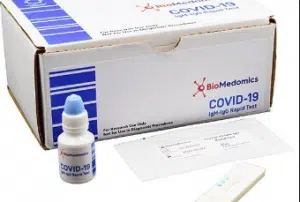

The level of confidence
All of this has one more dimension. The figures usually cited for Covid-19 kits often don’t provide periods of trust that it will protect us. Confidence intervals are the values around a specific number, such as a sensitivity value. They show the potential scope of values compatible with your data. If you want to replicate the exercise, there’s a way to show where you could find the answer. This knowledge is essential. After all, if you focus crucial assumptions on a number that might differ, you could end up with serious problems.
Case study
Let’s only take one case. Let’s claim a Coronavirus report done in a Covid test near me is cited with 88 and 90%, respectively, responsiveness and specificity. We should measure the trust intervals provided by the number of cases in each group during the study. Let’s assume we do so and end up with a responsiveness of 88% (85 to 92, 95% CI). Plus, a precision of 90% (84 to 95, 95% CI). Here, the ‘95% CI’ means a trust interval of 95 per cent. The infection could, in essence, have a sensitivity as low as 85% and a specificity of as little as 84%. It gives out a 5.3 LR+ and a 0.18 LR-.
What does this mean?
Let’s assume the predicted likelihood for the pre-test is 0.1. In this scenario, a successful outcome will give you a chance of about 0.38 after check, which is still small. Will you live in solitary confinement with a 0.38 probability? Furthermore, what happens if you have a crucial job? Besides, has something ever been learned from this?
Similarly, their pre-test chance may be measured at 0.95 in a prior case concerned with medical personnel members on the front line. If this offers you an adverse outcome, the corresponding likelihood for the post-method is 0.78. Always very high.
Conclusion
By now, we’ve reviewed Covid test kits and what to expect. We’ve also discussed how confident people seem as they use these. We have found that the reports of point-of-care yes / no diagnosis checks are rarely perfect. Likewise, one may try them using Bayesian statistics and the idea of a chance pre-method. A positive outcome does not automatically imply that the individual has the disease. This happens if they are in the Scottish Highlands in an isolated hamlet. For the sake of this example, do this.
Please disregard the chance that we move or isolate ourselves. Likewise, an unfortunate medical options result doesn’t imply the individual didn’t have the disease. If they spend only four weeks on the front line treating hundreds of patients with the virus, it’s the case. Background matters and specific information can be critical in these moments of research. Besides, we may use it to improve screening.
